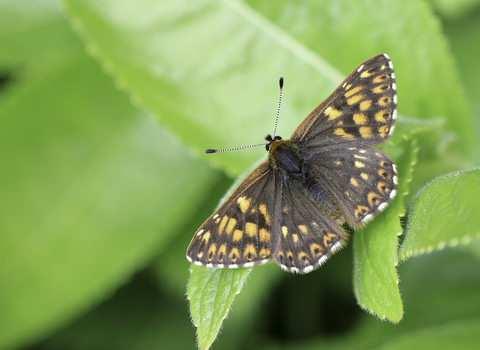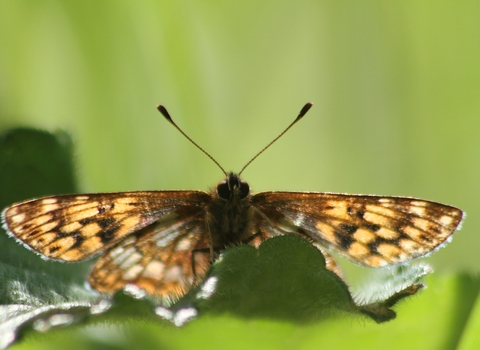
WildNet - Tom Marshall

Duke of Burgundy © Tom Hibbert
Duke of Burgundy © Tom Hibbert
Duke of Burgundy
This beautiful orange and brown butterfly is now a rare sight in the UK
Scientific name
Hamearis lucinaWhen to see
Adults: April to JuneTop facts
About
The Duke of Burgundy is a small butterfly that takes to the wing in mid-to-late spring. They can be found on chalk and limestone grasslands with some slopes or scrub to provide shelter, or sometimes in woodland with large rides, glades and clearings. Their numbers have crashed in recent decades. Since the 1980s, their distribution has shrunk by around 89%; they are now only found in a few parts of England.Males are very territorial. They defend small, sunny patches a few metres wide. They'll often perch on a plant, waiting to chase off rivals or follow any females that fly by. After mating, females flutter from foodplant to foodplant, laying their eggs on the undersides of leaves.
The caterpillars feed on primroses and cowslips. They usually spend the day hiding near the base of the plant, climbing up to feast on leaves during the night. In late summer, the fully-fed caterpillars pupate on the ground or in a grassy tussock. They'll emerge as butterflies the following spring.
What to look for
A very small orange and brown butterfly. The uppersides of the wings are brown with a mosaic of orange markings. The undersides of the hind wings are dark orange-brown with rows of white spots. All wings have a chequered brown and white border.Caterpillars are brown and covered in grey hairs. They have an orange head and a dark line running along the back, with distinct black spots spaced out within the line. They also have a row of faint yellow patches each side of the dark line.
